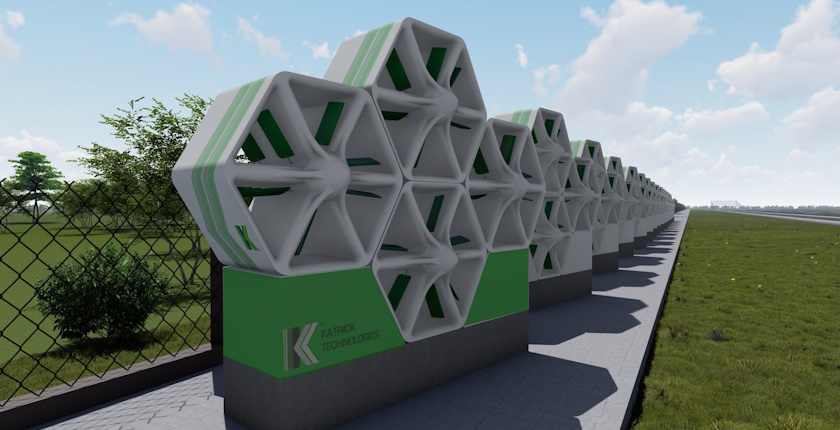
Foto: Katrick Technologies
Glasgow-based startup Katrick Technologies has developed an innovative technology for generating green electricity. Its Wind Panel turbines aren’t conventional tall towers with blades, but are hexagonal and shaped like honeycomb. They can be installed on the tops of buildings or other structures.
In contrast to traditional wind turbines that generate electricity through rotation, Wind Panel utilizes oscillating aerofoils. Each device has six tunnels with the flaps inside. They convert kinetic energy from the wind into mechanical oscillations, then turned into electricity.
The Wind Panel works within a larger scope of wind speeds and directions, at low heights
Investors in traditional wind farms often face logistical and financial challenges due to the large land area required for turbine placement and high maintenance costs. In contrast, Katrick claims that small honeycomb-shaped turbines are particularly suitable for installation in urban areas. Unlike conventional solutions, Wind Panels work within a larger scope of wind speeds and directions, at low heights.
The Wind Panel was developed in collaboration with research organization Manufacturing Technology Centre (MTC).
The first phase of testing took place at the University of Strathclyde in Glasgow. Engineers working on the prototype development expected to achieve between 25 W and 40 W of mechanical power at a wind speed of 12 meters per second. However, the Wind Panel reached an average of 41.1 W at just 10.2 meters per second, according to the company.
Two more testing phases are ahead for the technology
Two more testing phases remain. First, with conditions that simulate nature. The final stage is to optimize the design in line with the results, Katrick revealed.
“Demand for clean electricity will rise significantly as we move away from using power produced by burning fossil fuels. However because distribution networks may not be able to fully satisfy this demand, we will need to be able to generate renewable energy locally or on buildings. Katrick’s novel technology is a great example of how this can be achieved, said Steve Nesbitt, Chief Technologist for the Built Environment at MTC.


















Be the first one to comment on this article.